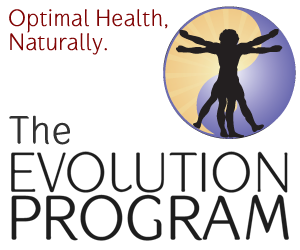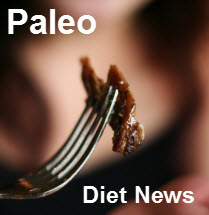The Paleo Diet and Superfoods - Part 2: Fruits & Nuts
This next installment about the Paleo diet and superfoods explores fruits and nuts that have superior nutritional value. In the first article in this series we looked at green superfoods such has wheat and barley grasses, blue-green algae, Spirulina and more, and how these can help us improve our health. Fruits and nuts contain antioxidants that aid in repairing free radical damage.
In our modern, technologically advanced society we are under a great deal of stress and are exposed to many toxins in our food and in the environment. Even eating a clean Paleo diet will not give us all of the nutrition we need to help our bodies fight off these stressors. But fruit and nut superfoods can help our bodies cope and fight off the free radicals that form as of a result of stress. What are some common forms of stress?
- Aging
- Environmental
- Pollutants
- Trauma
- Disease
- Pace & Pressure of Modern Life
Antioxidants help build up the immune system to fight off free radical damage and some of the best sources of antioxidants are to be found in certain fruits and nuts.
The Paleo Diet and Superfoods: Fruits and Nuts
We will start with an amazing fruit that comes from inner Mongolia, Goji Berries. From the Foodmatters website:
Goji Berries - Goji berries are grown on vines in the protected valleys of inner Mongolia and Tibet. These distinctively flavoured red berries are a very rich source of vitamin C, having 500 times more vitamin C per ounce than oranges and actually more than any other fruit. They are a superb source of vitamins A, B1, B2, B6 and E and contain a full complement of protein with 18 amino acids and 21 trace minerals. Most of all they are an excellent antioxidant making it an ideal natural whole food for reversing aging and protecting against disease.
One of my favorite antioxidant laden superfoods is cacao. It is amazing to me that chocolate (72% and higher, of course) is now considered a superfood and is practically a requirement for good health! But beware of commercial cocoa powders and chocolate. Processing and heating removes much of the medicinal properties of this superfood.
Illustration of the cacao fruit and plant by Francisco Manuel Blanco. Image courtesy of Wikipedia.org
Raw Cacao - For this nut we could easily dedicate a whole page, if not a book. A word of warning before we start however, most cocoa powder and commercial chocolate is processed via the “Dutch method” meaning it is subjected to scorching temperatures of up to 150°C with the additional aid of solvents, thus destroying most of the nutrients and antioxidants. Be sure to attain certified organic raw cacao in a powder, nib or whole bean form as the temperature will have never been allowed to exceed 40°C thus allowing all the heat-sensitive vitamins, minerals and antioxidants to remain intact. Raw cacao beans contain possibly the world’s most concentrated source of antioxidants found in any food. They also extremely high in magnesium which has been found to be the most common deficient major mineral even following a balanced diet. For those concerned with not getting enough iron it should be pleasing to know that one small 28 gram serving of raw cacao beans gives 314% of the recommended daily allowance of iron. And if that is not enough raw cacao beans have an antioxidant (ORAC) score of 95,500. To put that into perspective, that is 14 times more flavonoids (antioxidants) than red wine and 21 times more than green tea.
Maca and Acai are both from South America and have been a part of the local diet for millennia. Given their amazing properties, we should certainly consider adding these to our diets as well.
Acai berries. Image courtesy of Wikipedia.org
Maca - Maca powder is from the Maca root, a flavorful ancient superfood from Peru. Maca has been cultivated for at least 2000 years and was consumed by Inca warriors to increase strength and endurance. It is a highly nutritious food that has been used traditionally to gain energy, promote sexual desire, support fertility and enhance immune system function. It continues today to be a significant staple food and medicinal plant for the Peruvian people and is now widely available around the world as a whole
food supplement.
Acai - Acai berries have long been a part of the staple diet of the tribes in the Amazon. With the appearance of a purple grape and taste of a tropical berry it has been shown to have powerful antioxidant properties thanks to a high level of anthocyanins, pigments also found in red wine. The ORAC rating of acai is 1,027. Make sure to look for the freeze-dried acai fruit in which the nutrients are kept intact or when buying the juice look for a brand that has not been pasteurized or heated in any way.
Ah, coconuts! Many Paleo diet practitioners know the benefits of this superfood. In fact we have written about this amazing nut many times on Paleo Diet News. If it’s not part of your daily intake, consider adding some coconut products like coconut oil or milk. You won’t regret it!
Coconuts on the tree. Photo by Dcubillas. Image courtesy of Wikipedia.org
Coconuts - Young coconuts are one of the highest sources of electrolytes in nature. Electrolytes are ionized salts in our cells, that transport energy throughout the body. Coconut water is a much better alternative to commercial sports drinks laden with artificial sugars and colors. The molecular structure of coconut water is identical to human blood plasma, which means that it is immediately recognized by the body and put to good use. Drinking the juice from a young coconut is like giving your body an instant blood transfusion. In fact this was common practice during World War II in the Pacific, where both sides in the conflict regularly used coconut water, siphoned directly from the coconut, to give emergency transfusions to wounded soldiers.
Coconut oil- Coconut oil’s saturated fat is of the medium-chain fatty acid variety, which are digested more easily and utilized differently by the body than other saturated fats (such as butter, meat and eggs). Whereas other saturated fats are stored in the body’s cells, the medium chain fatty acids in coconut oil are sent directly to the liver where they are immediately converted into energy. Coconut oil will actually speed up metabolism so your body will burn more calories in a day which will contribute to weight loss. Coconut oil supports healthy metabolic function and is a revered anti-bacterial, anti-viral and anti-fungal agent. Pacific islanders deem coconut oil to be the cure-all gift from nature for all illness.
Noni fruit is known to have anti-bacterial and regenerative properties. Along with coconut, noni has been a staple of Polynesian medicine, for millennia.
Noni fruit on the tree. Photo by Eric Guinther. Image courtesy of Wikipedia.org
Noni - This fruit has been used by Polynesian islanders as a regenerative medicine for more than 1500 years. Research documents that the noni fruit has astounding anti-bacterial properties, even against E-coli. It has anti-tumor activity, anti-inflammatory properties, is effective as a pain reliever, generates cell repair and strengthens the immune system. Noni contains a multitude of vitamins, minerals, enzymes and phytonutrients. Many believe that the synergistic effect of the multi-spectrum nutrients is what gives it its potency. It has been proven beneficial for colds and flu’s, digestive disorders, skin disorders, pain relief, headaches, infections and more. For best results look for a freeze-dried product that uses only the whole fruit or when buying the juice look for a brand that does not use pasteurizing.
No review of the Paleo diet and superfoods fruits and nuts would be complete without a recipe that includes two of my favorites, coconut and chocolate. And for an extra health boost check out the variations at the end of the recipe!
Coconut Hot Chocolate
Do you want to get your daily fix of superfoods? How about an incredibly rich and delicious Paleo approved version of hot cocoa?
Ingredients
2 heaping teaspoons of raw cacao powder
1 cup of coconut milk
Several tbsp of cold coconut milk
A small amount of your favorite sweetener (I would use honey)
½ tsp vanilla extract
Preparation
Gently heat the coconut milk in a small pot. Measure out the 2 teaspoons of cacao powder into your favorite mug. Add the cold coconut milk to the cacao powder and mix to create a paste that has a thick creamy consistency. Add the vanilla and the sweetener to taste. Taste the creamy mixture. It should be very chocolaty. Once the coconut milk has heated through, slowly add it to the mug, stirring it in until all of the ingredients are blended. Then enjoy! If you want it a bit hotter, return the mixture to the pot and gently heat to the desire temperature.
Variation: Instead of vanilla, add cinnamon or cayenne for a kick.
Stay tuned for more about the Paleo diet and superfoods. There are so many fantastic foods that can enhance our health and our lives. Some taste pretty darn good too!
Have you added any superfood fruits and nuts to your Paleo diet? Have you noticed any improvements as a result? Please share them below with other readers. And if you enjoyed this article, please share it with your friends and family on Facebook and Twitter. Thank you!





